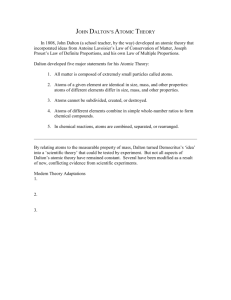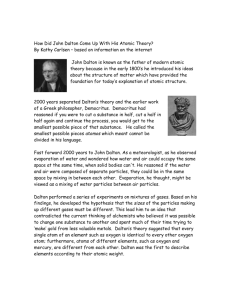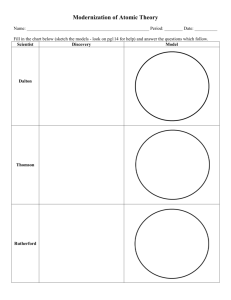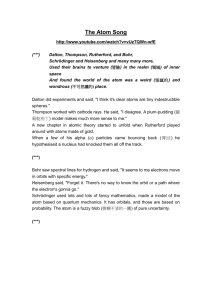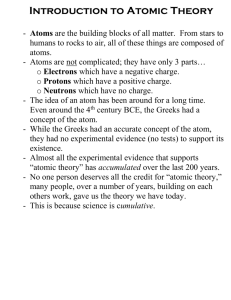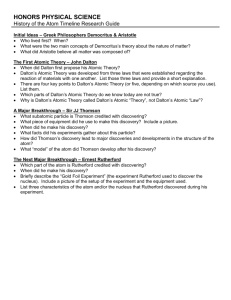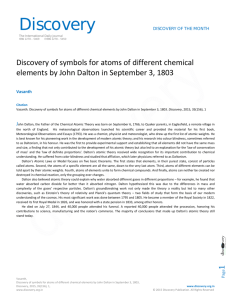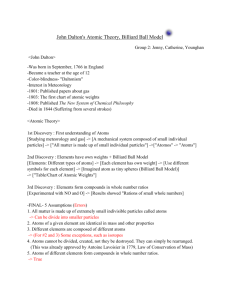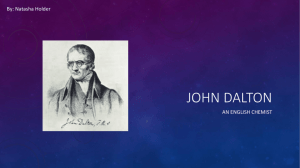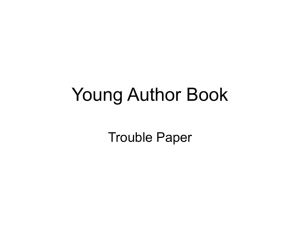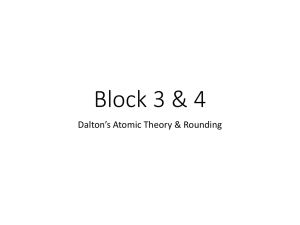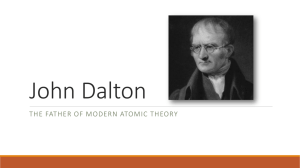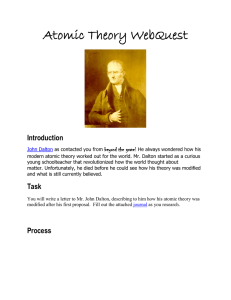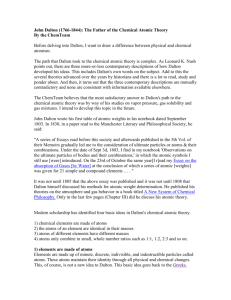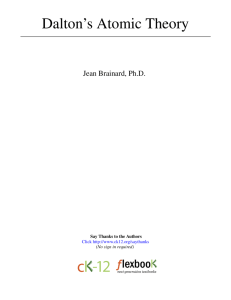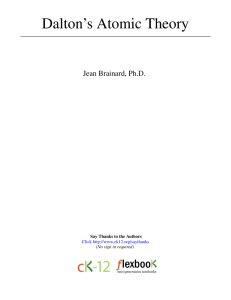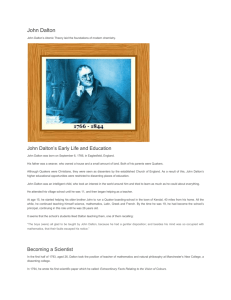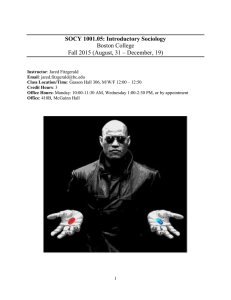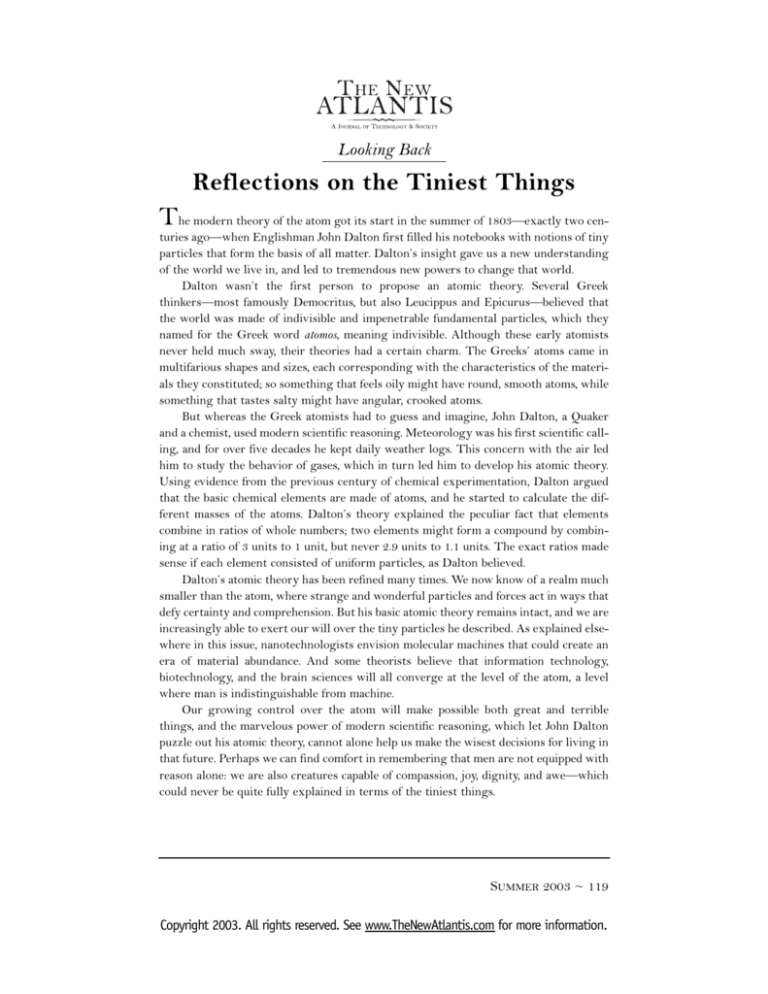
Looking Back
Reflections on the Tiniest Things
The modern theory of the atom got its start in the summer of 1803—exactly two centuries ago—when Englishman John Dalton first filled his notebooks with notions of tiny
particles that form the basis of all matter. Dalton’s insight gave us a new understanding
of the world we live in, and led to tremendous new powers to change that world.
Dalton wasn’t the first person to propose an atomic theory. Several Greek
thinkers—most famously Democritus, but also Leucippus and Epicurus—believed that
the world was made of indivisible and impenetrable fundamental particles, which they
named for the Greek word atomos, meaning indivisible. Although these early atomists
never held much sway, their theories had a certain charm. The Greeks’ atoms came in
multifarious shapes and sizes, each corresponding with the characteristics of the materials they constituted; so something that feels oily might have round, smooth atoms, while
something that tastes salty might have angular, crooked atoms.
But whereas the Greek atomists had to guess and imagine, John Dalton, a Quaker
and a chemist, used modern scientific reasoning. Meteorology was his first scientific calling, and for over five decades he kept daily weather logs. This concern with the air led
him to study the behavior of gases, which in turn led him to develop his atomic theory.
Using evidence from the previous century of chemical experimentation, Dalton argued
that the basic chemical elements are made of atoms, and he started to calculate the different masses of the atoms. Dalton’s theory explained the peculiar fact that elements
combine in ratios of whole numbers; two elements might form a compound by combining at a ratio of 3 units to 1 unit, but never 2.9 units to 1.1 units. The exact ratios made
sense if each element consisted of uniform particles, as Dalton believed.
Dalton’s atomic theory has been refined many times. We now know of a realm much
smaller than the atom, where strange and wonderful particles and forces act in ways that
defy certainty and comprehension. But his basic atomic theory remains intact, and we are
increasingly able to exert our will over the tiny particles he described. As explained elsewhere in this issue, nanotechnologists envision molecular machines that could create an
era of material abundance. And some theorists believe that information technology,
biotechnology, and the brain sciences will all converge at the level of the atom, a level
where man is indistinguishable from machine.
Our growing control over the atom will make possible both great and terrible
things, and the marvelous power of modern scientific reasoning, which let John Dalton
puzzle out his atomic theory, cannot alone help us make the wisest decisions for living in
that future. Perhaps we can find comfort in remembering that men are not equipped with
reason alone: we are also creatures capable of compassion, joy, dignity, and awe—which
could never be quite fully explained in terms of the tiniest things.
SUMMER 2003 ~ 119
Copyright 2003. All rights reserved. See www.TheNewAtlantis.com for more information.

